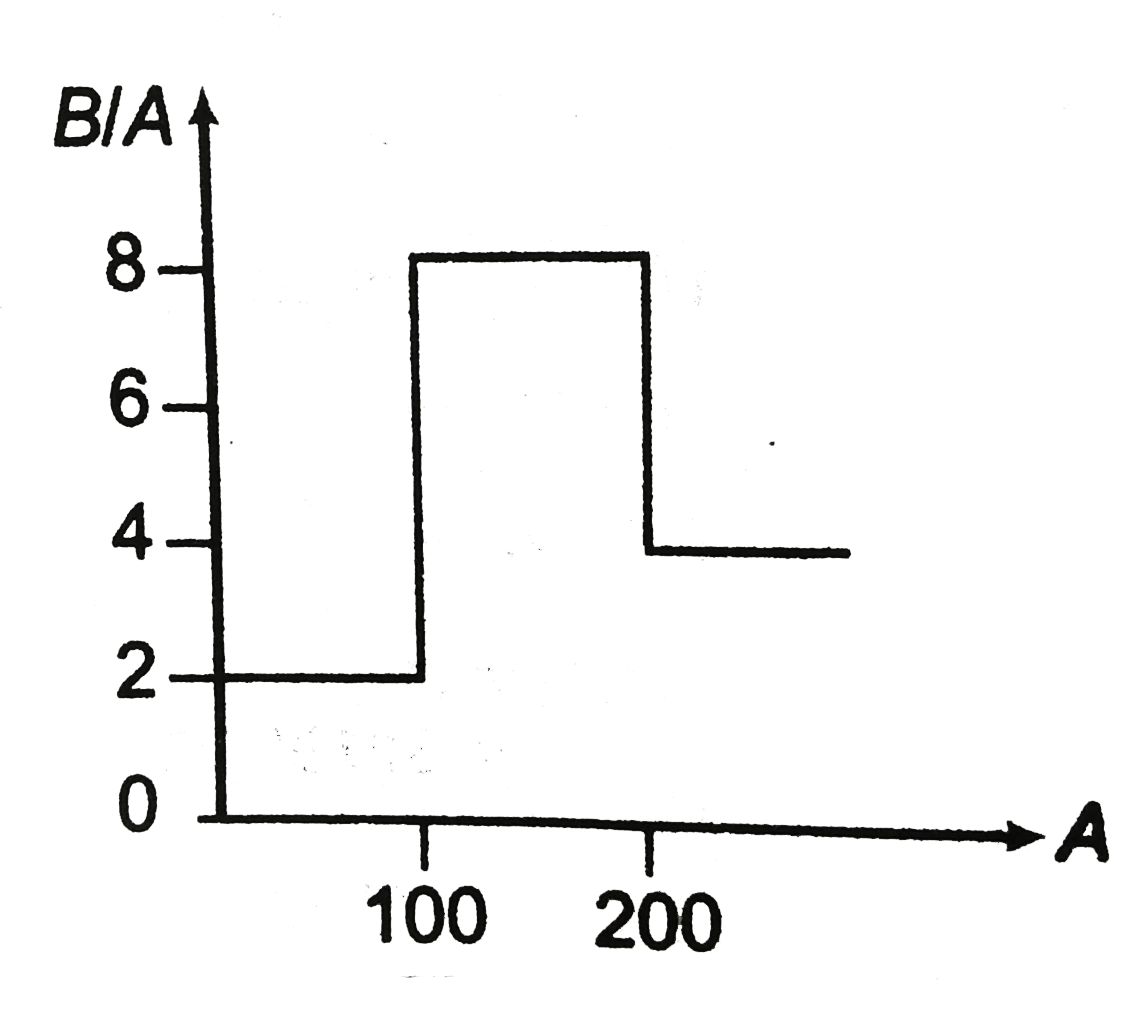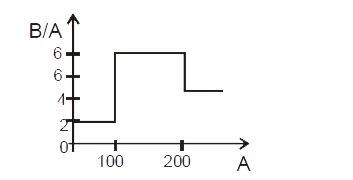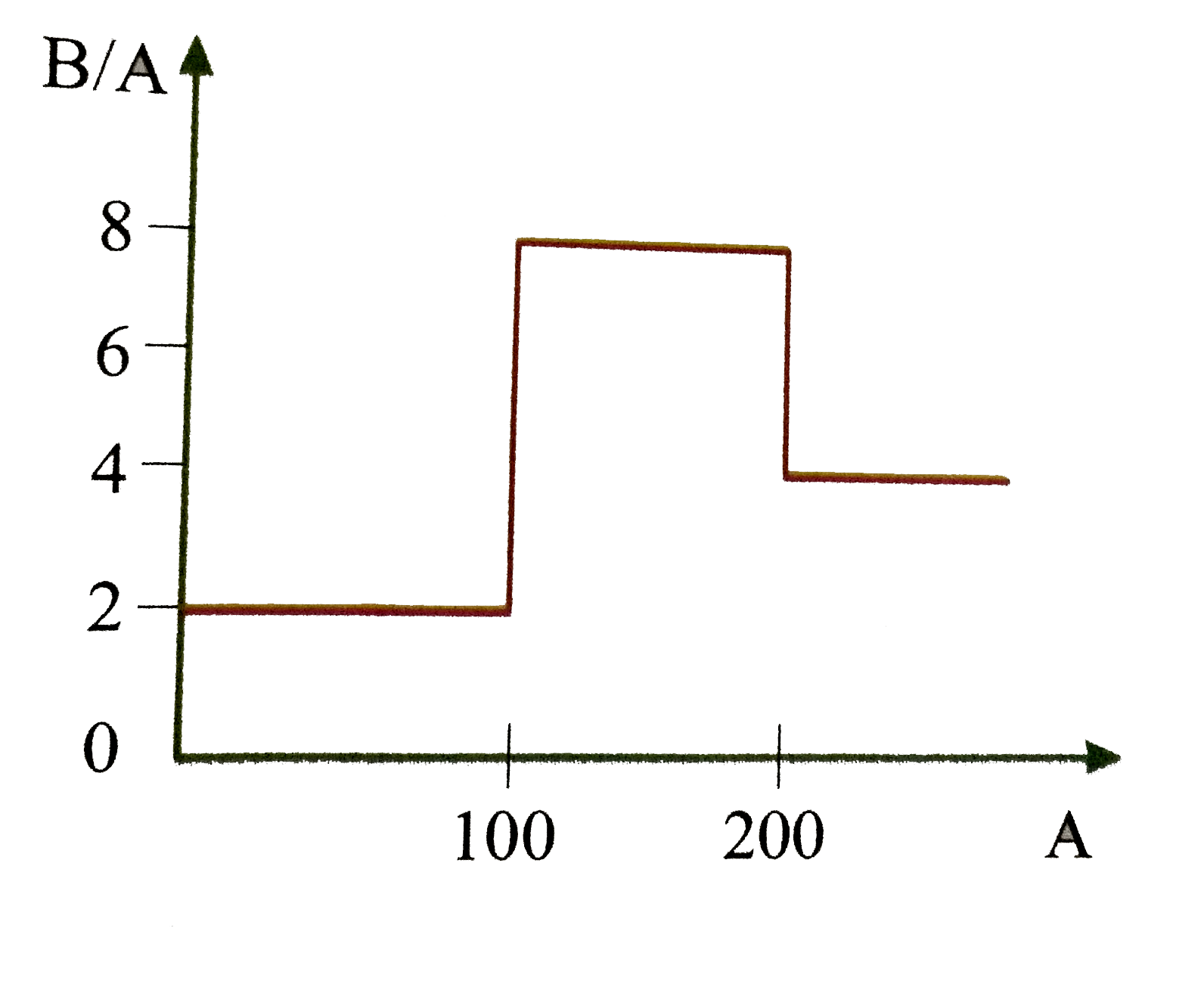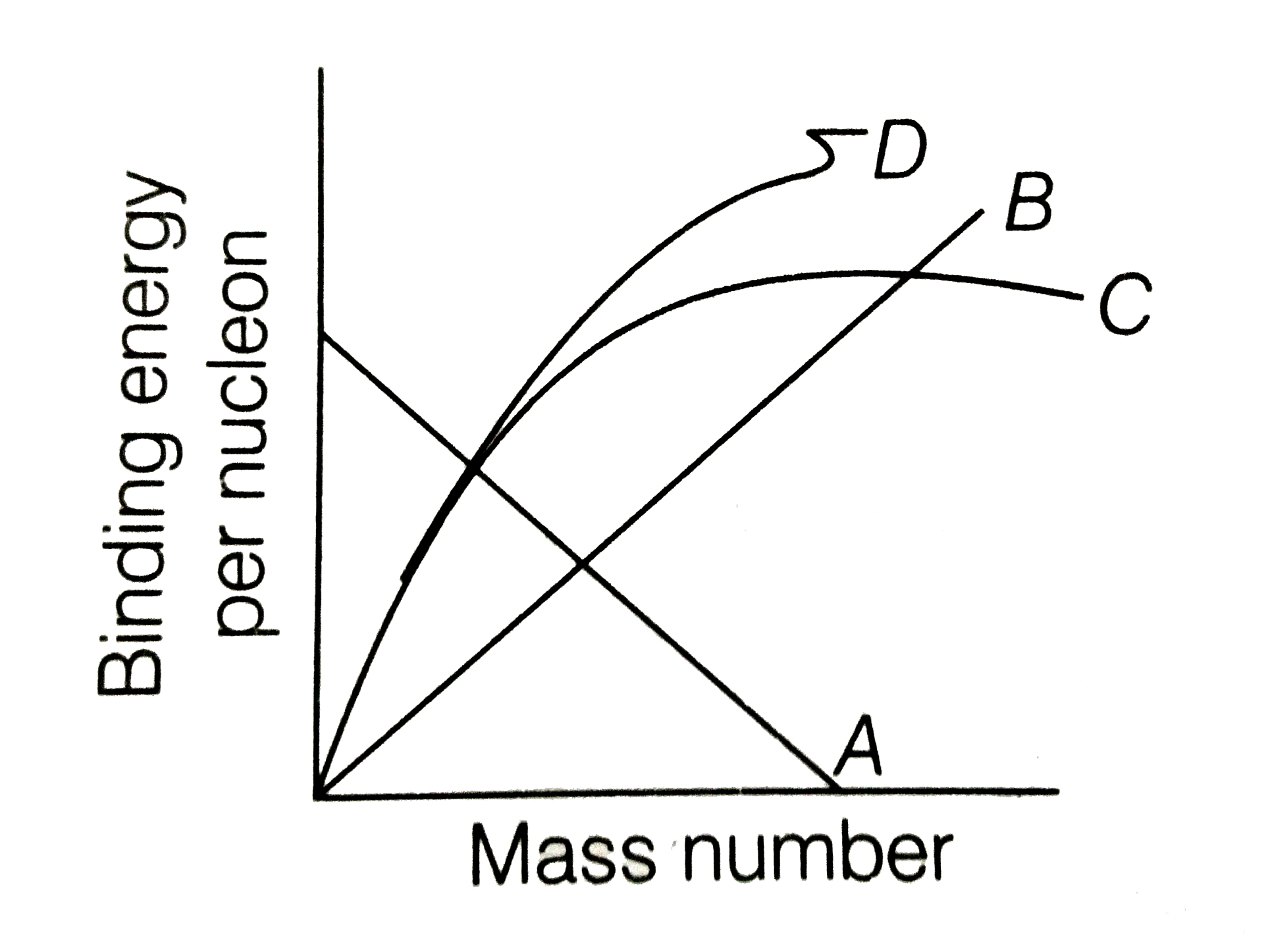Assume that the nuclear binding energy per nucleon (B/A) versus mass number (A) is as shown in figure. Use this plot to choose the correct choice(s) given below.
(a) Fusion of two nuclei with mass numbers, lying in the range of 1<A<50 will release energy.
(b) Fusion of two nuclei with mass numbers lying in the range of 51<A<100 will release energy.
(c) Fission of a nucleus lying in the mass range of 100<A<200 will release energy when broken into two equal fragements.
(d) Fission of a nucleus lying in the mass range of 200<A<260 will release energy when broken into two equal fragments.

A
(i),(ii)
B
(ii),(iii)
C
(iii),(iv)
D
(ii),(iv)
Video Solution
Text Solution
The correct Answer is:D
In (ii),(iv),B.E./nucleon increses, enegry is released.
|
Topper's Solved these Questions
- NUCLEAR PHYSICS AND RADIO ACTIVITYBOOK - CP SINGHCHAPTER - NUCLEAR PHYSICS AND RADIO ACTIVITYEXERCISE - EXERCISES
118 Videos
- NEET PREVIOUS YEARBOOK - CP SINGHCHAPTER - NEET PREVIOUS YEAREXERCISE - PAPER
89 Videos
- OPTICAL INSTRUMENTSBOOK - CP SINGHCHAPTER - OPTICAL INSTRUMENTSEXERCISE - EXERCISES
63 Videos
Similar Questions
Knowledge Check
Assume that the nuclear binding energy per nucleon (B/A) versus mass number (A) is as shown in the figure. Use

this plot to choose the correct choice(s) given below. FigureAFusion of two nuclei with mass numbers lying in the range 1 lt A lt 50 will release energyBFusion of two nuclei with mass numbers lying in the range of 51 lt A lt 100 will release energyCFission of a nucleus lying in the mass range of 100 lt A lt 200 will release energy when broken into two equal fragmentsDFission of a nucleus lying in the mass range of 200 lt A lt 260 will release energy when broken into two equal fragments.Assume that the nuclear binding energy per uncleon (B/A) versus mass number (A) is as shwon in Fig. Use this plot to choose the correct choice (s) given below:
 AFusion of two nuclei with mass number lying is the range of 1<A<50 will release energyBFusion of two nuclei with mass number lying in the range of 51<A<100 will release energyCFission of a nucleus lying in the mass range of 100<A<200 will release energy when broken into equal fragments.DFission of a nucleus lying in the mass range of 200<A<260 will release energy when broken into equal fragments.
AFusion of two nuclei with mass number lying is the range of 1<A<50 will release energyBFusion of two nuclei with mass number lying in the range of 51<A<100 will release energyCFission of a nucleus lying in the mass range of 100<A<200 will release energy when broken into equal fragments.DFission of a nucleus lying in the mass range of 200<A<260 will release energy when broken into equal fragments.Assume that the nucles binding energy per nucleus(B/A) versus mass number (A) is as shown in the figure Use this plate to choose the energy the correct (s) given below
 Afusion of two nucleus with mass number typing in the range of 1<A<50 will release energyBfusion of two nucleus with mass number typing in the range of 51<A<100 will release energyCfusion of a nucleus typing in the mass of100<A<200 will release energy when broken into two equal fragmentsDfusion of a nucleus typing in the mass range of200<A<260 will release energy when broken into two equal fragments
Afusion of two nucleus with mass number typing in the range of 1<A<50 will release energyBfusion of two nucleus with mass number typing in the range of 51<A<100 will release energyCfusion of a nucleus typing in the mass of100<A<200 will release energy when broken into two equal fragmentsDfusion of a nucleus typing in the mass range of200<A<260 will release energy when broken into two equal fragments
Variation Of Binding Energy Of Per Nucleon With Mass Number
View SolutionAs the mass number increase binding energy per nucleon :
View SolutionBinding energy per nucleon relation with mass number
View SolutionThe graph between the binding energy per nucleon (E) and atomic mass number (A) is as-
View SolutionAs the mass number A increases, the binding energy per nucleon in a nucleus.
View Solution

